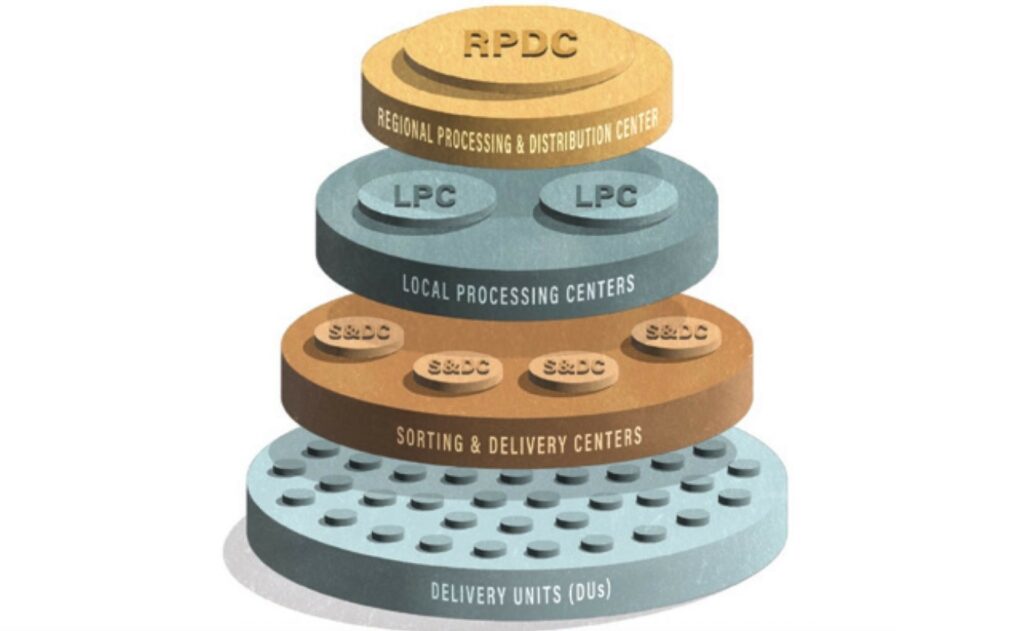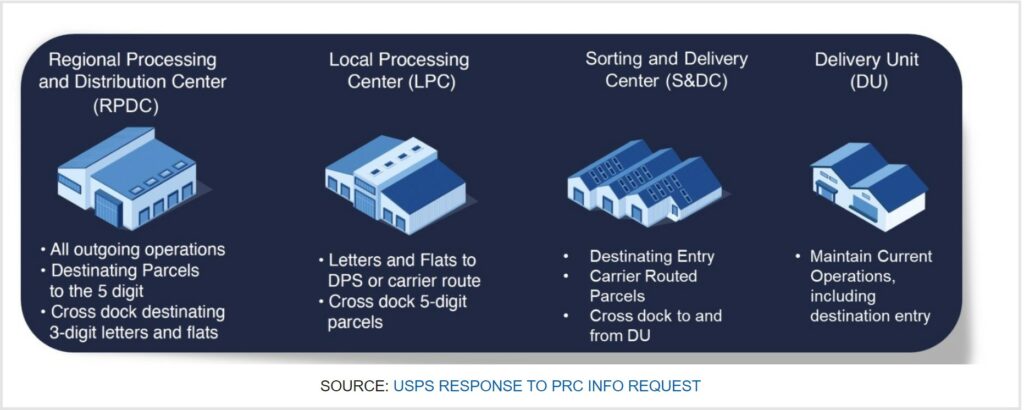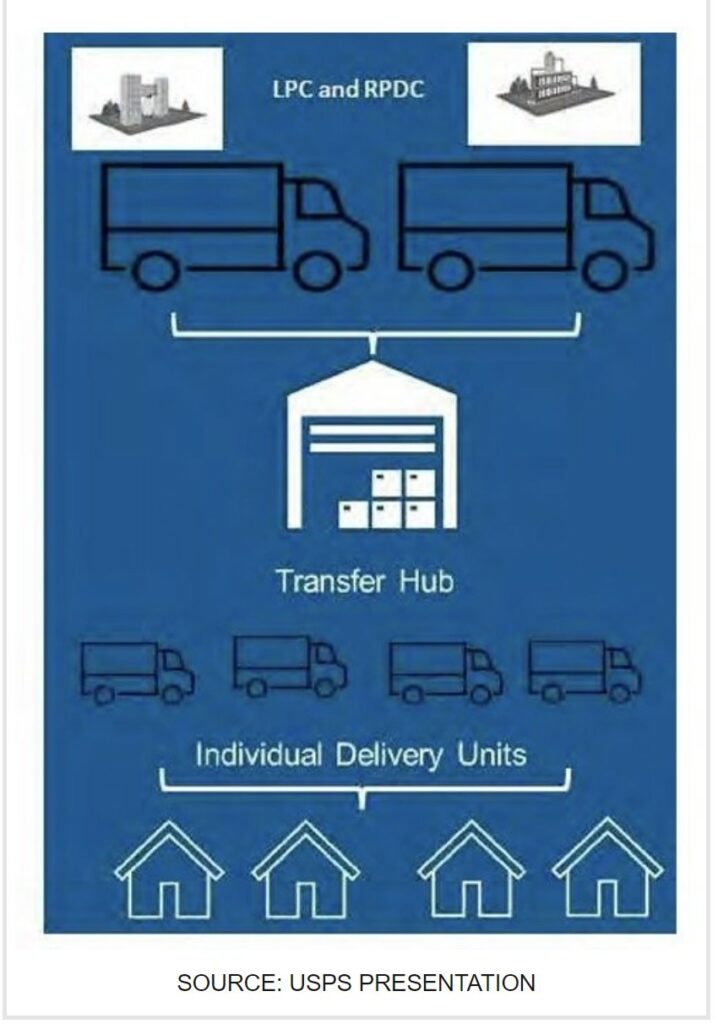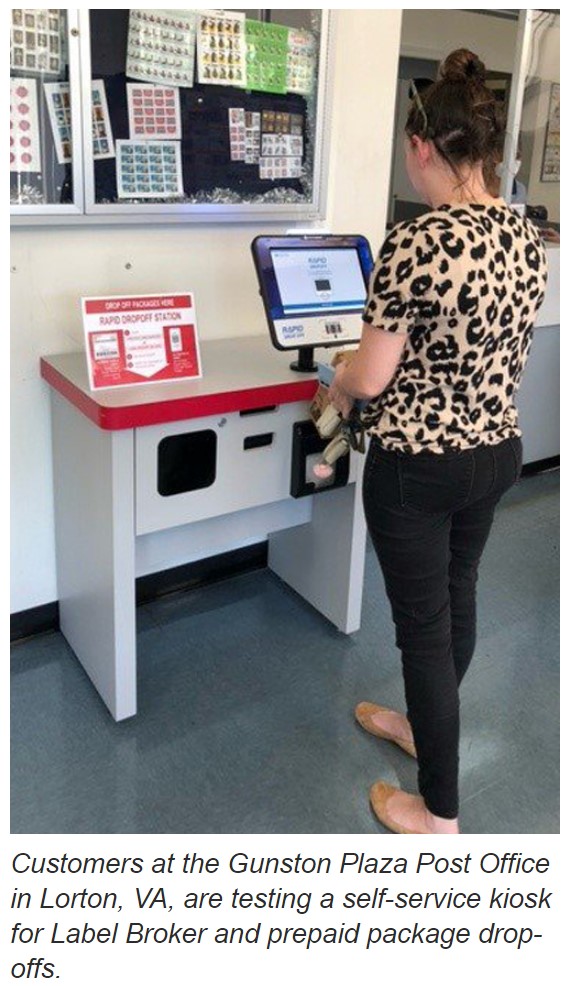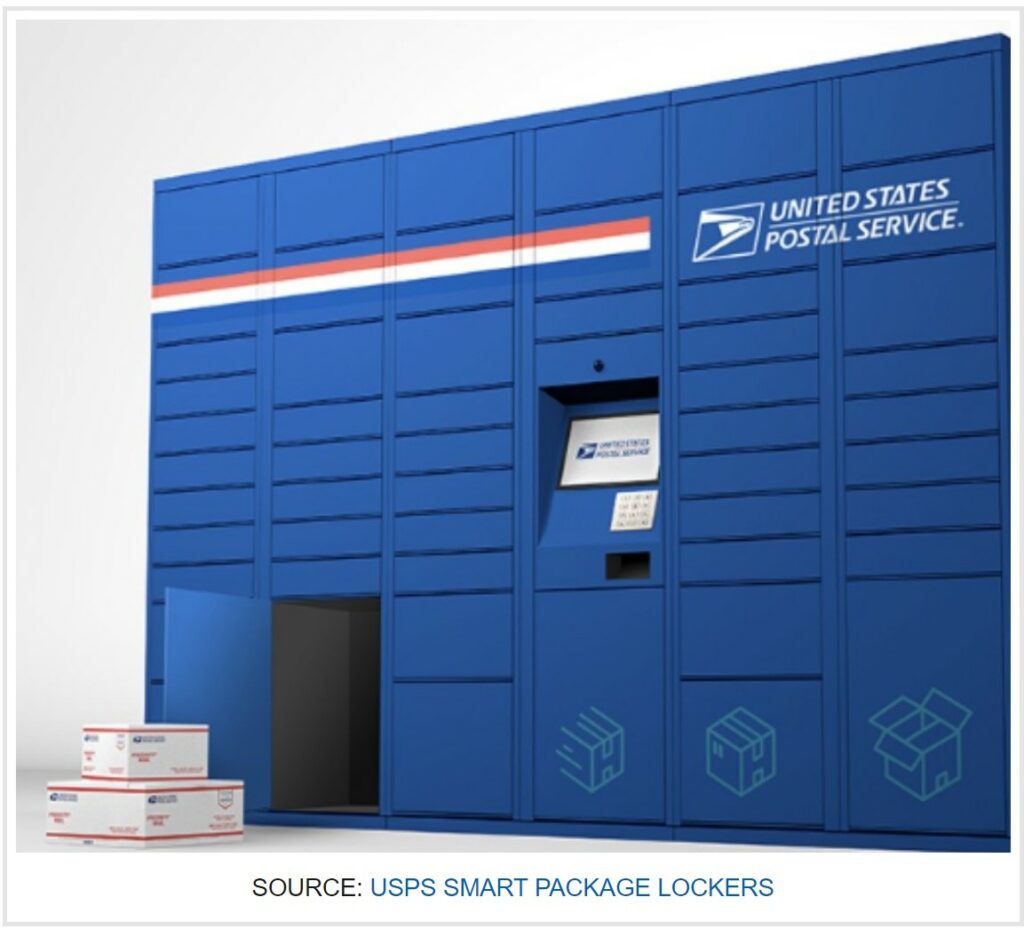I have followed Steve Hutkins and retired Postmaster Mark Jamison for years now. Both Mark and I have had conversations both on and off Angry Bear. It appears we are nearing the end of the reconstruct of the USPS. Whether it works as well shy 50,000 employees with the expectation civilians on their own can manage without the experience of their help, service, and delivery remains to be seen. Long read and a worthy read with links! Delivering for America: The latest lists and a look ahead, Save the Post Office, Steve Hutkins The Postal Service’s implementation of the Delivering for America plan continues. Processing centers are being consolidated with larger regional facilities and converted to Sorting & Delivery Centers, post offices are
Topics:
Bill Haskell considers the following as important: Hot Topics, politics, Save The Post Office, Steve Hutkins, US EConomics
This could be interesting, too:
Robert Skidelsky writes Lord Skidelsky to ask His Majesty’s Government what is their policy with regard to the Ukraine war following the new policy of the government of the United States of America.
NewDealdemocrat writes JOLTS revisions from Yesterday’s Report
Joel Eissenberg writes No Invading Allies Act
Ken Melvin writes A Developed Taste
I have followed Steve Hutkins and retired Postmaster Mark Jamison for years now. Both Mark and I have had conversations both on and off Angry Bear. It appears we are nearing the end of the reconstruct of the USPS. Whether it works as well shy 50,000 employees with the expectation civilians on their own can manage without the experience of their help, service, and delivery remains to be seen. Long read and a worthy read with links!
Delivering for America: The latest lists and a look ahead, Save the Post Office, Steve Hutkins
The Postal Service’s implementation of the Delivering for America plan continues.
Processing centers are being consolidated with larger regional facilities and converted to Sorting & Delivery Centers, post offices are seeing their carriers relocated to S&DCs, new package sorting equipment is being deployed to the S&DCs, site visits are being conducted to determine where new S&DCs and EV hubs can be created, new self-service machines are being installed in the lobbies of post offices at S&DCs, and clerks at post offices are being subjected to cost-cutting staffing reviews.
Here is an update on the latest developments.
S&DCs launching in June 2024
The Postal Service has shared a new list on the status of the S&DC initiative with unions and management. It shows 13 facilities that will be converted to S&DCs in June 2024, along with 37 post offices that will become spoke offices that send their carriers to the S&DCs. Here’s the latest list.
(View on Google Docs here, tab “June 2024 S&DCs and spokes.”)
These 13 S&DCs will eventually take on carriers from many more spoke offices, but the Postal Service is implementing S&DCs gradually, depending on factors like the progress of work at the facility to make floor space available for carrier distribution cases, to install new breakrooms and bathrooms, and so on.
The 37 spoke offices will send about 850 routes to the 13 S&DCs, probably about a thousand letter carriers. Over 88 percent of these routes are city carrier routes. That’s compared to the nation as a whole, for which 60 percent of the 233,000 routes are city carrier. That’s yet another indication that the S&DC plan is primarily about improving service in urban areas where volume is largest. (See this previous post on the rural/urban divide of the S&DC plan.)
Five of the 13 new S&DCs are carrier annexes, which are in some ways an earlier, smaller version of S&DCs. Both consolidate carriers from other post offices to cut costs — which doesn’t always work out because carriers have to drive farther to their routes. It seems likely that many carrier annexes — there are about 520 of them — will be renamed S&DCs and take on additional carriers from more post offices.
In addition to the S&DCs launching in June 2024, the Postal Service will be opening an S&DC in Pompano Beach, FL, at 3150 NW 33rd Street, beginning in January 2024. Five facilities in the Pompano Beach area will send 250 routes here. This is a new leased facility, and it may be the first case where the Postal Service has leased a new property to serve as an S&DC. There will be more such cases as implementation continues.
Overview of RPDCs, LPCs, S&Ds, and Spokes
In the latest issue of Eagle Magazine, the Postmaster General muses on “the state of the Postal Service and what’s in store for the coming year as the journey continues to achieve soaring aspirations.” In addition to ten b&w photographs of the PMG (as well as one on the magazine’s cover), the article has some useful details.
The Regional Processing & Distribution Centers (RPDCs) are the “backbone” of the future network. They will sort all originating and destinating mail and packages. The PMG says designs for 12 RPDCs are underway, with six opening in 2023. Eventually there will be 60 RPDCs, each the central node of its region.
(There’s more on these RPDC regions here.)
Local Processing Centers (LPCs) will sort mail to the final destination and connect RPDCs to delivery operations. By the end of 2024, according to the PMG, there will be 31 LPCs, supporting 11 RPDCs. There will eventually be a total of 190 LPCs, nearly all of them repurposed P&DCs.
At this point, the Postal Service has shared (or provided enough information to guess) the location of about 450 facilities in the new network — nearly all 60 RPDCs, 142 LPCs, 75 S&DCs, and approximately 180 spoke offices. (That adds up to over 450 because some facilities are co-located in the same building.)
Below is a map of these 450 facilities and a list sorted by RPDC Region. Note that this is not an official USPS list, and it has errors because the update lists keep adding and subtracting facilities, and some of the lists don’t provide enough information to identify the correct facility.
(View on Google Docs, tab “Network update.”)
It’s not exactly clear which 12 RPDCs the PMG was referring to in the Eagle article, but the most likely sites to launch soon are identified in the column “RPDC implement” with a specific date or “first wave.”
It’s also not clear which 31 LPCs will be the first to launch, but the Postal Service has informed stakeholders of the location of 26 P&DCs where a Mail Processing Facility Review (according to postal manual PO-408) has been initiated or where the consolidation is subject to a PO-408 review. In each case, the P&DC will give up its outgoing mail and package operations to the region’s RPDC. These consolidations are noted in the column “MPFR status.”
The Postal Service is tracking the status of the consolidations and sharing the supporting documentation here. For those where a final decision has been made, the Final MPFR includes the number of positions lost: Augusta – 14; Macon – 34; Medford – 18, Eugene– 36. That’s an average of 25 positions per consolidation. At that rate, converting almost 200 P&DCs to LPCs would eliminate 5,000 positions.
The Postal Service has also introduced a new type of facility called Transfer Hub (more on their functions, below). About a dozen of them have been identified so far, most of them co-located with S&DCs. See the “New Type” column for a list of these Transfer Hubs.
The 180 spoke post offices identified so far have sent, or are scheduled to send, over 3,000 routes to the S&DCs, about 17 routes per spoke. The DFA plan will eventually have about 6,000 spoke post offices and 600 S&DCs, with 100,000 routes being relocated.
On the current list, the average distance between S&DC and spoke is 9 miles and 16 minutes. This is somewhat less than previous modeling has indicated, which shows more like 12 miles and 18 minutes. The Postal Service is beginning the implementation of S&DCs with spoke offices that are closest to the S&DC, perhaps to mitigate the impact of travel between the S&DC and the routes — the cost of long drives being one of the biggest problems with the S&DC plan.
Network transformation is largely a game of musical chairs (or is it deck chairs on the Titanic?). Sorting machines and personnel who handle outgoing mail are relocated from P&DCs to RPDCs, and the freed-up space is used for distribution cases for carriers being relocated from delivery units at post offices. Moving the carriers empties out over half the post office, and the excess space is then used to justify downsizing the retail network with relocations to smaller retail spaces and post office closings.
Left standing at the end of the game are the postal employees who are displaced or excessed and the postal customers whose post office gets relocated or closed.
Facility functions explained
The Postal Service has explained that, generally speaking, the RPDCs sort all originating and destinating mail and packages, while LPCs sort destinating letters, which are then transported to S&DCs for carrier delivery to addresses or to Transfer Hubs for transport to delivery units at post offices.
As part of the PRC’s Public Inquiry into DFA, the Postal Service recently provided a more detailed description. It’s technical, but for mailers and postal employees, it’s worth quoting in full:
“RPDCs will sort outgoing volume for all letters, flats, and packages to the 3-digit. RPDCs will sort destinating parcels to the 5-digit and cross-dock destinating 3-digit (or finer mailer-prepared containers, e.g., 5-digit) sorted letters and flats to an LPC, after performing a tray or bundle sort if needed.
“LPCs will sort destinating letters and flats to delivery point sequence and 5-digit. LPCs will also cross-dock 5-digit sorted packages to delivery units, and may cross-dock carrier route bundles of flats prepared on delivery sort containers to delivery units.
“All S&DCs will sort packages to the carrier route level, sort manual 5-digit letters and flats to the carrier route level, and carriers will sort manual letters and flats to delivery point sequence. Most S&DCs will sort packages to the 5-digit and cross-dock 5-digit letter, flats, and packages to other downstream delivery units.”
These levels of sortation are shown in the illustration below:
In addition to RPDCs, LPCs, S&DCs, and delivery units, there’s a fifth component in the new network called Transfer Hubs. The Postal Service began referring to these hubs many months ago, and last summer the APWU asked what they were all about, but the Postal Service would not provide an official definition. As part of the Public Inquiry, the Postal Service provided this explanation:
“S&DCs, the vast majority of which will be existing postal facilities, will also improve the transportation network by serving as Transfer Hubs for smaller Delivery Units that could not be logically consolidated and for Post Offices within a particular area, both for mail and packages going to smaller Delivery Units for delivery, and for mail and packages that have been entered at Post Offices.
“In this regard, it is important to note that Transfer Hubs will be in the same facilities as S&DCs, though the functions are distinct, and transfer hub capabilities may be initiated in a particular S&DC facility before or after the letter carrier moves occur. While the Postal Service has previously utilized similar facilities for these purposes, those facilities have been haphazardly deployed in the past, whereas deployment here will occur in a thoughtful, organized, and systematic fashion.”
In other words, the S&DCs sort the mail and load it on vehicles going out for carrier delivery on routes that are (generally) within a 30-minute drive from the S&DC. For addresses outside that range, mail and packages will be loaded at the Transfer Hubs onto trucks that transport mail to the delivery units at post offices (which is how all the mail is currently handled).
For now, this transportation is done by postal employees for facilities close to the processing centers and by private Highway Contract Routes for those farther away. But there’s currently a pilot in Virginia to insource the HCR transportation to USPS-employees.
It’s not clear how the mail will be transported to retail-only post offices (no delivery unit), but presumably this mail would go out from the Transfer Hubs as well.
As the Postal Service told the PRC, most of the Transfer Hubs will be co-located with S&DCs, but a few of them may be in facilities that had been identified as potential S&DCs but failed something called a financial rigor test (the Postal Service won’t say what the criteria in this test are). The latter include Canton, OH; Bridgeport, CT; Rockford, IL; Morgantown, WV; and West Lane Station in Stockton, CA.
Potential EV sites and S&DCs
The Postal Service has also shared a list of 300 facilities where it’s conducting site visits to evaluate the electric infrastructure with an eye to doing repair and alteration work and turning the site into an Electric Vehicle hub, a Transfer Hub, or an S&DC.
The columns in gray contain information added to the original USPS list.
(View on Google Docs, tab “Potential S&DCs, Hubs, EV sites.”)
The Postal Service says decisions have not been made for these sites, and the list is subject to change based on additional findings and analysis.
The list shows the current electric load of the building. The Postal Service has apparently determined that a minimum of 1,200 amps is required if the site is going to host numerous EVs. A Level 2 charging station needs about 32 amps, so 1,200 amps would be enough for about 40 EVs. That’s probably sufficient for larger post offices with 30 or 40 routes — perhaps those that are too far from an S&DC to become a spoke office. An S&DC probably requires enough amps for at least 80 carriers.
The Postal Service has apparently ruled out the possibility of installing charging stations at smaller post offices where a lower amperage would be necessary.
The list may be similar to the list of “Candidate Sites” that the Postal Service used to evaluate the EV purchase for the Supplemental Environmental Impact Statement. That list of Candidate Sites did not identify any locations, but it included 414 unnamed potential facilities where the new delivery vehicles might be deployed. About 200 of the 300 sites on the new list were on my list of “potential candidate sites” (as discussed here).
Self-service options at S&DC post offices
In the 2021 DFA plan document, the Postal Service stated that it planned to “invest approximately $4 billion in our retail units to provide a world-class customer experience with improved retail training, modernized uniforms, refreshed lobbies, and expanded self-service and digital options.”
This statement might give the impression that post office lobbies across the country, large and small, urban and rural, would be getting an upgrade, but that may not be the case. For starters, anyway, it looks as though the upgrades will take place at the post offices at S&DCs.
According to a recent notification to the unions and management, “the Postal Service is planning to expand several of its retail technologies to the Sorting and Delivery Centers (S&DCs). The S&DC lobbies will be modernized with self-service tools providing customers with choices in how they ship and receive packages.” Deployment of new equipment will begin this month.
These self-service tools include Smart Lockers, larger Parcel Drums, Rapid Dropoff Stations, and Self-Service Kiosks. Lobby access will be extended beyond normal business hours, and customers will be provided a quick response (QR) code to gain after-hours access to the retail outer lobby area. The lobbies will also include space for Passport services and Electronic Biometric Identity Services (EBIS).
New Smart Parcel Lockers
Not all the new equipment will be going to S&DCs. The Postal Service is also installing smart parcel lockers across the country. This initiative was first announced in August 2022, with deployment to about 65 post offices. The plan was to expand the initiative to over 450 post offices in ten metropolitan markets across the country by June 2024.
In the latest notification to the unions, the Postal Service lists about 125 post offices where smart lockers will be installed over the coming months. The offices are branches located in and around St. Louis, Missouri; Dallas, Texas; western Washington state; and throughout North Carolina and Minnesota. Here are a map and list.
(View Map and List on Google Docs, tab “Parcel Lockers.”)
The smart lockers are intended for customer convenience. They allow customers to retrieve incoming, redelivered and oversized post office (PO) box packages without waiting in the retail line. With all the postal thefts going on, they are also safer than leaving packages on a customer’s porch or doorstep.
Some post offices will offer 24/7 lobby access to make it easy to retrieve packages from the lockers. At post offices where 24/7 lobby access is not available, the Postal Service has developed a Secure Lobby Access solution. Once a customer’s package has been loaded into the Smart Locker, an email will be sent with a QR code and pin-code that grants access to both the locked outer lobby door and the locker itself.
The Postal Service says making parcel retrieval easier “drives more choice in carriers for package shippers. The more delivery choices we offer, the more shippers will choose the Postal Service as the carrier for their packages.”
Another advantage of parcel lockers is that they reduce the need for postal employees. Like all the other self-service options, they are a way for the Postal Service to cut costs.
As the Smart Locker materials say, the lockers “streamline Post Office staff workloads.” In fact, that may be the main reason for implementing parcel lockers.
One hesitates to speculate about the significance of the locations on the locker list, but it’s possible that these are post offices that will eventually give up their carrier operations to an S&DC. After the carriers are gone, fewer clerks are necessary (they help with the carrier operation), so it makes sense to reduce the workload of the remaining clerks with self-service machines and parcel lockers.
Function 4 Reviews
The Postal Service has also announced that it will be conducting Function 4 reviews at over 600 post offices during the coming months.
Function 4 refers to customer service activities at post offices, including window services, vending equipment, PO Box distribution, administrative and mail forwarding operations, as well as scanning incoming mail and distributing it to carriers. (There’s a detailed description in this USPS response to an information request in the PRC’s Public Inquiry on DFA.)
Here are a map and list of post offices where Function 4 Reviews will take place. The three columns on the left are from the original list shared with unions and management; those in gray have been added and may contain errors.
(View Map and List on Google Docs, tab “Function 4 Reviews.”)
According to the APWU, “Function 4 reviews are done for the sole purpose of reducing staffing hours. They use invented data and ridiculous formulas to draw the conclusion that an office is overstaffed, instead of using realistic data (actual work hours) to determine proper staffing.”
Looking Ahead
Back in September, PRC Commissioner Robert Taub told Congress that the Delivering for America plan may represent “the most fundamental change to the network since Ben Franklin was the postmaster general.”
Yet these changes are taking place with little or no oversight by the government. The Public Inquiry of the DFA being conducted by the PRC has not turned out to be a robust examination of the plan, perhaps because of pushback from postal leadership. Congress and the USPS Office of Inspector General are not taking a close look at the DFA either.
The media are even less interested in the plan. Most of the news articles about the consolidation of processing centers and relocation of letter carriers simply repeat the Postal Service’s press releases about “modernizing the aging and outmoded postal network.”
In the meantime, postal rates go up, volume goes down, jobs are eliminated, service deteriorates. And what comes next?
A “milk run” pilot is being conducted in Virginia to eliminate evening pickups of mail sent at post offices during the day, so First Class letters and parcels will sit overnight waiting for the morning pickup.
Operating hours at post offices will be reduced in a sequel to POStPlan (2012), which left 12,000 post offices with reduced hours and no postmaster.
Metro-area post offices will be closed in a revival of the Stations & Branches Optimization and Consolidation initiative (2009). The most likely to be shuttered are probably the stations and branches that lose their carrier operations to S&DCs and end up with a lot of excess space.
Leased post offices will be relocated to smaller spaces to save on rent costs, and owned properties will be sold off. To make such relocations easier, the Postal Service revised the federal regulations in June. Going forward, it will not be necessary to hold a public meeting — “written notification proved to be a more effective means of communicating” during the pandemic — and some relocations will take place without public notice and community comments at all.
More USPS-operated post offices will be replaced by privately-operated contract postal units (CPUs). According to an OIG report released a couple of weeks ago, “The Postal Service is pursuing CPU growth to help foster cost-effective, customer-focused retail service as part of its Delivering for America 10-year plan.” Perhaps we’ll see another effort to put CPUs in big box stores, like the 2014 initiative to put postal counters in 1,500 Staples (dropped following union-backed boycotts and an adverse labor board ruling).
More addresses will be shifted from home and curb delivery to centralized cluster boxes, the next step in a process that began a decade ago when the Postal Service started changing the regulations to make centralized delivery “the preferred mode of delivery for all new residential and commercial developments.”
In the end, 50,000 postal jobs will be lost, and postal services will suffer. The journey to achieve soaring aspirations continues.
— Steve Hutkins
USPS issues final environmental impact statement on new delivery fleet, Angry Bear, Steve Hutkins of Save the Post Office

